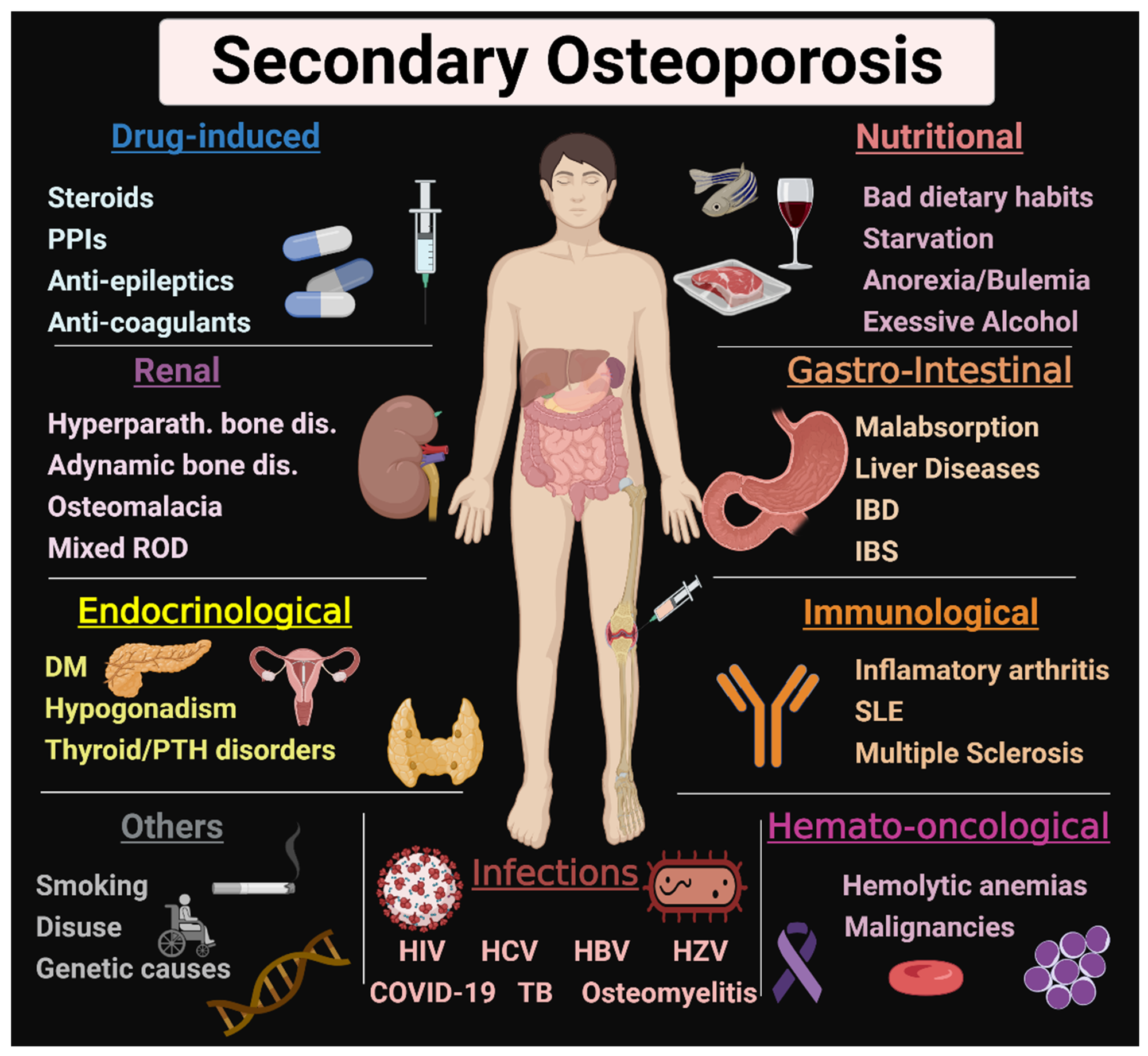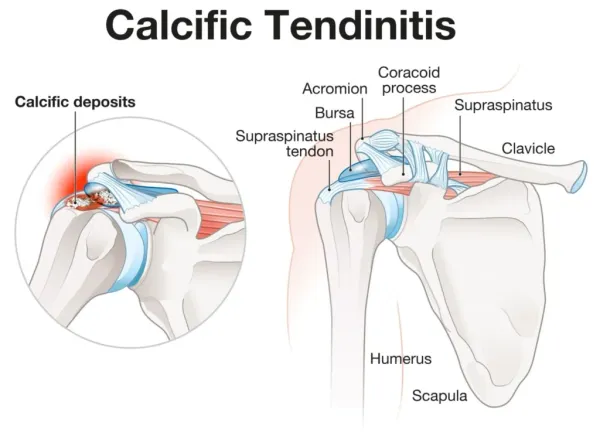Secondary Osteoporosis
Secondary Osteoporosis is the demineralisation and subsequent weakening of the bones causes by medical conditions, procedures and medications

Secondary Osteoporosis is the demineralisation and subsequent weakening of the bones causes by medical conditions, procedures and medications. These are characterised by causing bone loss, increasing fracture risk, directly affecting bone remodelling, indirectly affecting bone remodelling or interfering with the attainment of peak bone mass in younger individuals.
Diseases/Conditions
- Autoimmune disorders
- Rheumatoid Arthritis
- Lupus (SLE)
- Ankylosing spondylitis
- Haematologic disorders
- Leukaemia
- Lymphoma
- Multiple Myeloma
- Sickle cell disease
- Endocrine disorders
- Diabetes (T1 + T2)
- Hyperthyroidism
- Hyperparathyroidism
- Cushing's Disease
- Premature Menopause
- Low testosterone levels in males
- Gastrointestinal Disorders
- Coeliac disease
- Inflammatory bowel disease
- Chronic liver disease
- Chronic pancreatitis
- Cancers
- All due to chemotherapy
- Breast cancer and prostate cancer higher risk
- Neurological Disorders
- Stroke
- Parkinson's Disease
- MS
- Spinal Cord injuries
- Mental Illnesses
- Depression
- Eating Disorders
- Others
- Cystic Fibrosis
- HIV/AIDS
- COPD
- Immobility in general
- Postpolio syndrome
- Malnutrition and poor diet
Medications
The table below is adapted from the International Osteoporosis Foundation and summarises things nicely:
| Drug Class | Loss of Bone Mineral Density (BMD) | Examples |
|---|---|---|
| Androgen deprivation therapy (ADT) | BMD declines by 2-5% during the first year of ADT. | oserelin, triptorelin, buserelin and leuprolide |
| Aromatase inhibitors (AI) | Approx increase in loss of BMD of 0.5-1% per year | anastrozole, exemestane and letrozole |
| Glucocorticoids (GC) | All patients at increased risk of bone loss | betamethasone, prednisolone, cortisone |
| Selective serotonin reuptake inhibitors (SSRI) | Still under review but increased fracture risk | citalopram, sertraline, fluoxetine |
| Thiazolidinediones (TZD) | Reduce bone formation and increase reabsorption | Pioglitazone (can also be combined with metformin) |
Chemotherapy drugs, lithium and methotrexate are also linked with increased risk of osteoporosis and should also be considered.

References and Further Reading
About | International Osteoporosis Foundation [WWW Document], n.d. URL https://www.osteoporosis.foundation/health-professionals/about-osteoporosis (accessed 3.2.24).
Aromatase inhibitors (anastrozole, exemestane and letrozole) [WWW Document], n.d. . Breast Cancer Now. URL https://breastcancernow.org/about-breast-cancer/treatment/hormone-endocrine-therapy/aromatase-inhibitors-anastrozole-exemestane-and-letrozole/ (accessed 3.2.24).
Glucocorticoids: List, Uses, Side Effects, and More [WWW Document], 2020. . Healthline. URL https://www.healthline.com/health/glucocorticoids (accessed 3.2.24).
Gonadotropin-Releasing Hormone Agonist - an overview | ScienceDirect Topics [WWW Document], n.d. URL https://www.sciencedirect.com/topics/neuroscience/gonadotropin-releasing-hormone-agonist (accessed 3.2.24).
Jarrell, L., 2023. Osteoporosis management in primary care. Nurse Pract 48, 11–20. https://doi.org/10.1097/01.NPR.0000000000000090
Overview | Osteoporosis: assessing the risk of fragility fracture | Guidance | NICE [WWW Document], 2012. URL https://www.nice.org.uk/guidance/cg146 (accessed 3.2.24).
Thiazolidinediones (glitazones) [WWW Document], n.d. . Diabetes UK. URL https://www.diabetes.org.uk/guide-to-diabetes/managing-your-diabetes/treating-your-diabetes/tablets-and-medication/thiazolidinediones-glitazones (accessed 3.2.24).
Yang, R., Yu, Y., 2021. Glucocorticoids are double-edged sword in the treatment of COVID-19 and cancers. Int J Biol Sci 17, 1530–1537. https://doi.org/10.7150/ijbs.58695




